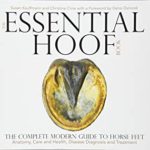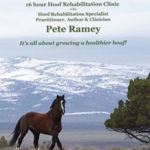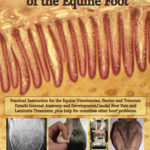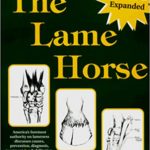single default post
Distal Limb Anatomy and Hoof Care
PHCP Introduction to Hoof Anatomy
Students should study this document during Beginning Studies and before they attend the beginning clinic. It is an informative resource for horse owners as well.
Anatomy-of-the-Equine
New students start here. Anatomy-of-the-Equine is a photographic journey through the horse, starting at the feet and slowly building from there. You need to be familiar with the this material before attending your first PHCP Beginning Anatomy clinic. There are great educational tools available for quick reference and a simple understanding of the hoof and distal limb anatomy.
The Hoof Explorer
The Hoof Explorer website allows you to further explore the distal limb anatomy of a horse. All structures including bone, cartilage, arteries, veins, ligaments, tendons, and nerves are shown in an interactive 3D format.
Iron Free Hoof
The Iron Free Hoof contains more great photos and easy-to-understand distal limb anatomy and dissection by PHCP clinician, Paige Poss. The information will help you visualize the inner hoof structures when looking at the foot from the outside. Students should be familiar with this information before they attend the PHCP Beginning Anatomy clinic.
The Essential Hoof Book: The Complete Modern Guide to Horse Feet
Susan Kauffmann and PHCP mentor, Christina Cline, have done a great job writing a clear and concise book with a lot of photos and illustrations, making it easily accessible for horse owners, beginning students, and professionals who are looking for a deeper understanding of hoof care. The book covers some controversial and often confusing subjects such as peripheral loading, high/low syndrome, cracks, long toes/low heels, and abscesses.
Pete Ramey
Pete Ramey’s Hoof Rehab website is a wealth of knowledge. Below are other available Pete Ramey resources available on his website.
Under the Horse
Pete Ramey’s DVD series is a must for anyone who is trimming horses. This series will teach you to recognize healthy hooves and pathology in hooves. Theory is presented as well as demonstrations of the steps needed to bring hooves to a healthier state. Pete does a great job of taking veterinary research and translating it to practical use in the field. You will watch these DVDs many times over as you progress through your training.
Care and Rehabilitation of the Equine Foot
 This textbook, written by Pete Ramey with contributions from Robert M. Bowker, VMD, PhD, Hilary M. Clayton, BVMS, PhD, DACVSMR,MRCVS, Brian Hampson, PhD, Eleanor Kellon, VMD, Kerry Ridgway, DVM, Debra Taylor, DVM, MS, DACVIM, and Kathryn Watts, BS, is a must read. Topics range from theory and practical trimming advice to nutrition, research, anatomy, hoof and body mechanics, and more.
This textbook, written by Pete Ramey with contributions from Robert M. Bowker, VMD, PhD, Hilary M. Clayton, BVMS, PhD, DACVSMR,MRCVS, Brian Hampson, PhD, Eleanor Kellon, VMD, Kerry Ridgway, DVM, Debra Taylor, DVM, MS, DACVIM, and Kathryn Watts, BS, is a must read. Topics range from theory and practical trimming advice to nutrition, research, anatomy, hoof and body mechanics, and more.
Hoof Rehab How-To Articles
These free on-line articles written by Pete Ramey include topics like bars, frog management, boots and pads, etc. Pete keeps these articles updated with his latest teachings.
Understanding and Reversing “Sinkers” and Hoof Capsule Rotation
Check out this free two-part webinar recording on Pete Ramey’s Hoof Rehab YouTube channel.
The Glass Horse
This interactive anatomy of the equine distal limb is designed to increase the users familiarity with anatomical structures and allow examination of all surfaces of bones, all regions of blood supply, and the relations of anatomical structures to the hoof.
Understanding The Horse’s Feet
This easy to understand book by John Stewart, MA Vet, MB, MRCVS is beneficial for any level of experience. The text covers the basics of equine anatomy and structures, with easy to understand photos, diagrams, and text. Other topics include lameness, laminitis, insulin resistance, and internal foot problems.
The Lame Horse
This updated and expanded edition of The Lame Horse by James R. Rooney, DVM is packed with the knowledge about lameness. Dr. Rooney explains the function and mechanics of the front and hind legs, and discusses what happens when things go wrong. He covers fractures, injuries to tendons and ligaments, muscles, the nervous system and much more.


